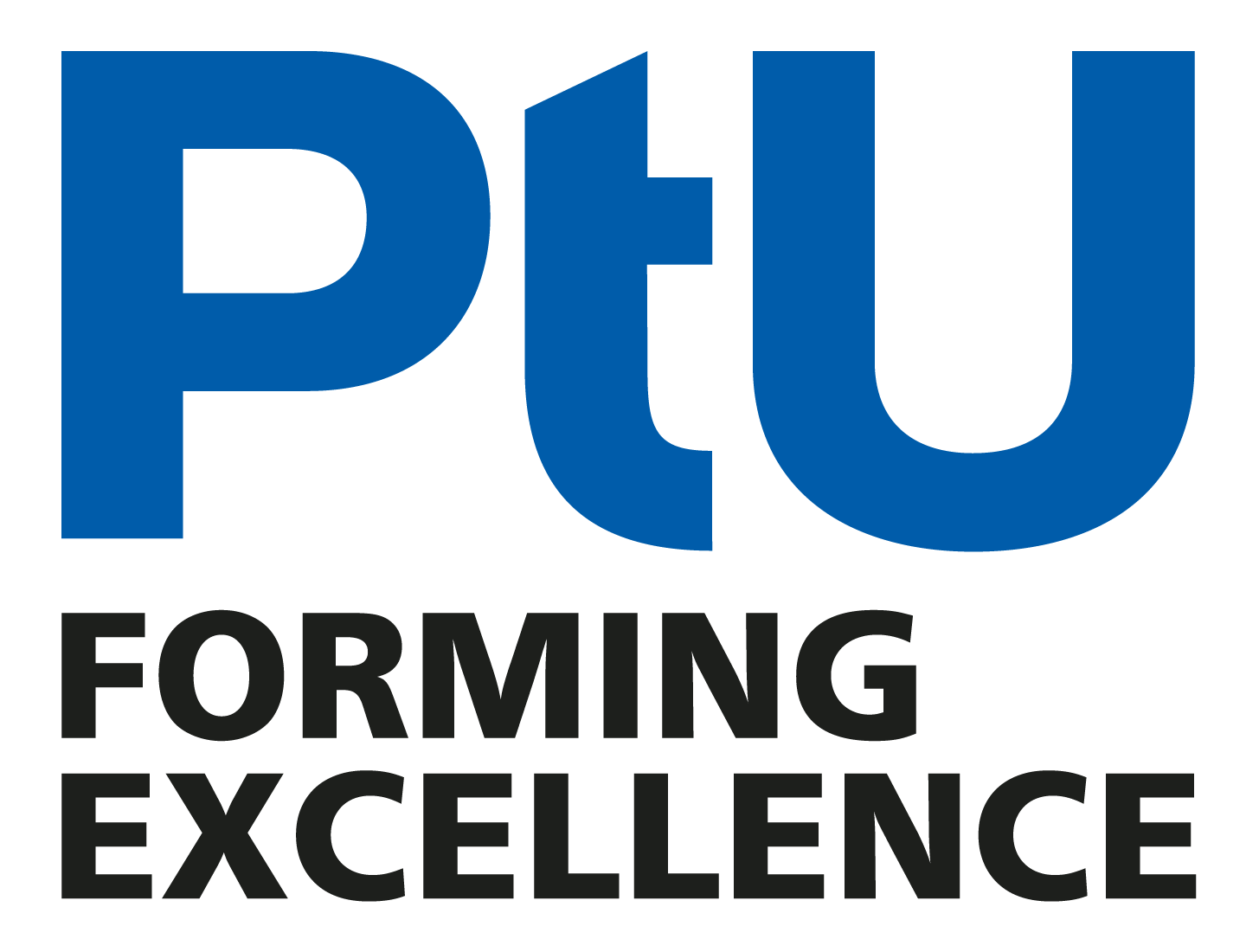IFEtargetryHUB – Inertial Fusion Energy (IFE) Targetry HUB for DT inertial fusion
The IFEtargetryHUB project investigates the manufacturing and metrology of targets, which are essential components for laser-driven inertial fusion. The Institute for Production Technology and Forming Machines (PtU) is responsible for the numerical simulation and optimization of a process chain for micro-forming. This includes a detailed material characterization of the utilized materials, such as the determination of forming limit curves and damage behavior during the forming process. These data serve as the basis for developing and validating a precise material and process model.
Furthermore, the PtU is involved in the planning, manufacturing, and commissioning of forming processes using both active media and rigid tools. In this context, process parameters are optimized, and both manufacturing methods are compared.
Coordinator: Nicolás Castrillón M. Sc.
Duration: November 2024 – October 2027
Funded by: BMBF
Motivation
Laser-driven inertial fusion is a pulsed process in which multiple high-energy lasers compress and heat a so-called target containing the hydrogen isotopes deuterium and tritium. At extreme temperatures of up to 120 million degrees Celsius, the target evaporates, and the fuel is compressed under enormous pressure. This allows atomic nuclei to overcome their electromagnetic repulsion and fuse. This reaction releases an enormous amount of energy and has the potential to be a clean and sustainable energy source.
Currently, no technology exists that can produce these targets in a commercially viable form for fusion reactors. This project brings together the knowledge and expertise of all participating partners in the joint research initiative to develop materials and manufacturing processes that enable efficient and scalable production, as well as the characterization of targets for laser-driven inertial fusion. These targets represent a bottleneck for the efficiency of nuclear fusion and are therefore a key technology on the path to future laser-driven fusion reactors.
Approach
A mechanical forming and cutting process using stamping machines represents an economical, time-, and resource-efficient method for parts manufacturing. However, due to the small sizes and high accuracy requirements of the spherical cap and cone (see Figure 1), a precise design and optimization of the forming process chain is required.
Leveraging its expertise in sheet metal processing, the Institute for Forming Technology (PtU) contributes to the overall project by investigating the formability of the components. To achieve a precise representation of material behavior and the forming process, numerical finite element simulations are first conducted.
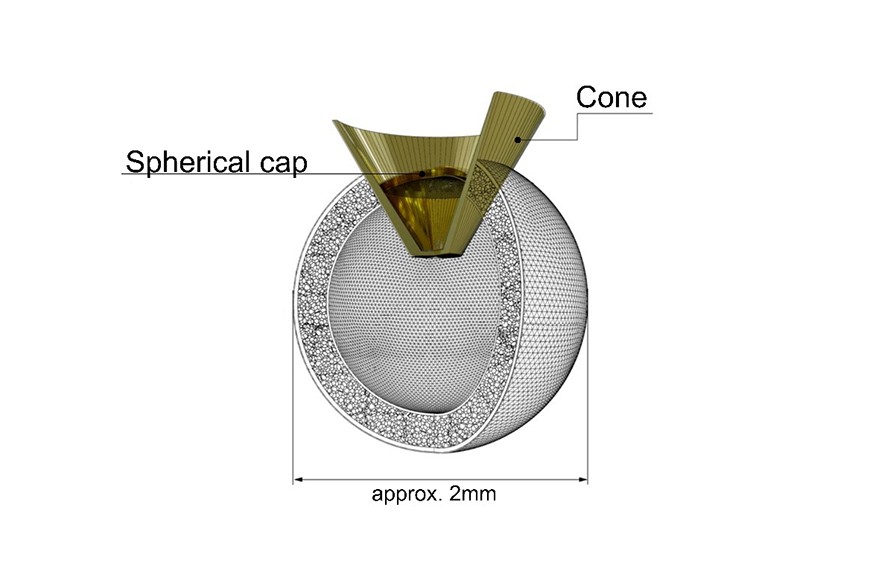
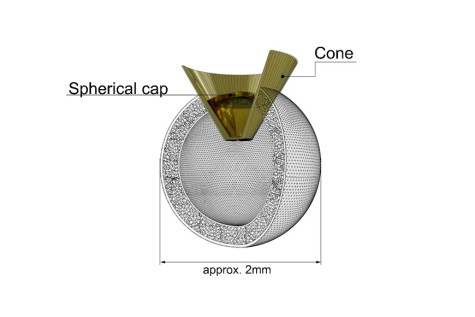
First, the characterization of aluminum foils under uniaxial and biaxial loading is carried out, providing fundamental parameters for modeling. Additionally, by determining forming limit curves, the material’s ability to withstand deformations without failure can be precisely assessed.
Another key aspect is the analysis of damage behavior, accompanied by detailed surface characterization and the measurement of friction coefficients, which are crucial for the accuracy of the model. The collected data is used for the development and validation of the material model, ensuring that the simulated behavior accurately reflects the experimental reality. The simulation of the forming process is performed to evaluate the feasibility and optimization of the process route using advanced simulation tools.
For the production of spherical caps and cones, two forming process routes are considered due to the demanding requirements: forming with a rigid tool and forming with a working medium. The process parameters are also optimized by adjusting them to improve product quality and manufacturing efficiency. Both forming methods used in the production chain are compared to select the optimal strategy regarding forming quality, enabling an economical and precise target manufacturing process.
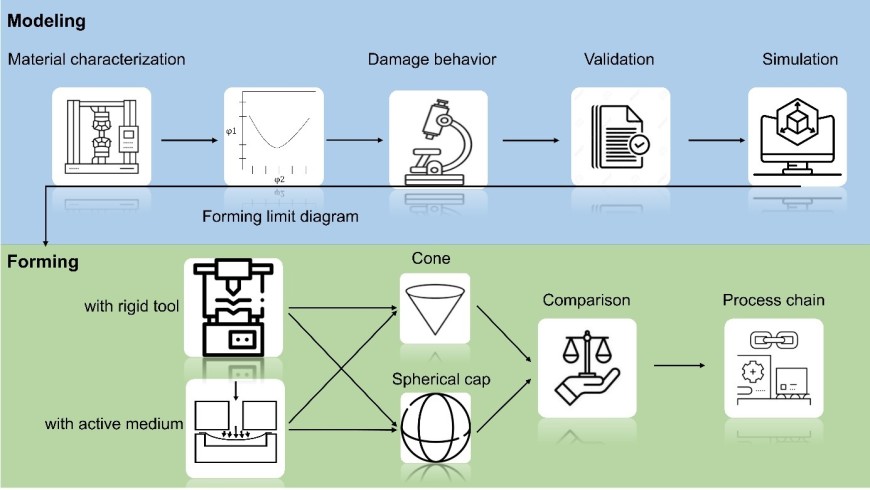
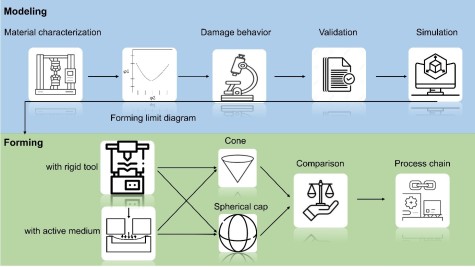
Acknowledgement
This research and development project is funded by the German Federal Ministry of Education and Research (BMBF) as part of the funding guideline “Basic Technologies for Fusion – On the Way to a Fusion Power Plant” under the funding code 13F1013I and is coordinated by the Fraunhofer Institute for Applied Solid State Physics (IAF).
The PtU expresses its gratitude to all industrial and academic partners involved in the IFEtargetryHUB research project.
Funded by
Project Partners

